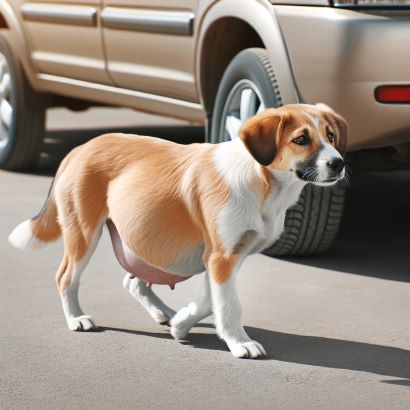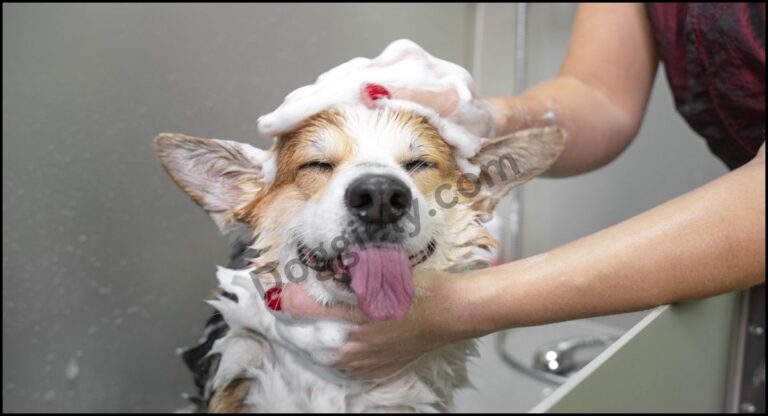The Top 10 Reasons to get a Dog into Your Life
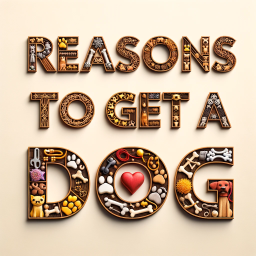
In a world where loneliness often creeps in, despite our constant connectivity, the idea of bringing a furry friend into our homes is more appealing than ever. Dogs, known universally as man’s best friend, offer more than just companionship. As you consider the leap into pet ownership, let’s explore the top 10 reasons to get a dog might just be one of the best decisions you’ll ever make.
1. Unconditional Love and Companionship
Dogs offer an unparalleled form of companionship. Their unconditional love and unwavering loyalty can be a comforting presence, providing solace in times of stress and joy in moments of happiness.
2. Health Benefits
Numerous studies have shown that having a dog can lead to improvements in physical health. Regular walks and playtime with your dog can increase your physical activity, thereby enhancing your cardiovascular health and overall fitness.
3. Mental Health and Emotional Support
Dogs have an incredible ability to sense emotions and provide comfort. They can be excellent emotional support animals, helping to alleviate symptoms of depression, anxiety, and loneliness.
4. Social Interaction
Owning a dog can increase your social interactions. Whether it’s meeting other dog owners at the park or engaging with neighbors during walks, dogs can be great ice-breakers and conversation starters.
5. Routine and Responsibility
Caring for a dog requires a consistent routine and instills a sense of responsibility. This can be particularly beneficial for individuals seeking structure in their daily lives.
6. Safety and Security
Dogs are natural protectors. Their heightened senses can make you feel safer at home, and their protective instincts can provide a sense of security.
7. Teaching and Learning Opportunities
For families, a dog can be a great way to teach children about responsibility, empathy, and caring for another living being. Additionally, training a dog can be a learning experience for the owner as well.
8. Entertainment and Fun
Dogs have a way of bringing laughter and joy into a household. Their playful antics and unique personalities can be endlessly entertaining.
9. Aiding in Routine Development
Having a dog encourages the development of a healthy routine. Regular feeding times, walks, and play sessions can add structure and regularity to your day.
10. Lifelong Bond
The bond formed with a dog is unique and lasting. The shared experiences and mutual affection create a deep connection that can have a profound impact on your life.
Why Choose a Dog?
Choosing the right pet is a personal decision that depends on a variety of factors including lifestyle, living arrangements, and personal preferences. While other pets offer their own unique benefits, dogs stand out for their versatility, emotional intelligence, and the deep bond they form with their owners. As you conduct your comparative research, consider these aspects of dog ownership to determine if a canine companion is the best fit for your life.
Here is the list of dog breeds, suitable human companions, and their benefits:
| # | Breed | Suitable For | Benefits |
|---|---|---|---|
| 1 | Labrador Retriever | Families, active individuals | Friendly, good with children, easy to train |
| 2 | German Shepherd | Active individuals, guard duty | Intelligent, loyal, versatile |
| 3 | Golden Retriever | Families, therapy work | Gentle, intelligent, great for assistance |
| 4 | French Bulldog | Apartment dwellers, families | Low exercise needs, good companions |
| 5 | Bulldog | Low-energy households | Gentle, good with kids, low exercise needs |
| 6 | Beagle | Families, outdoor enthusiasts | Curious, friendly, great for activities |
| 7 | Poodle | Allergy sufferers, varied households | Hypoallergenic, intelligent, versatile |
| 8 | Rottweiler | Experienced dog owners | Loyal, protective, strong |
| 9 | Yorkshire Terrier | Apartment dwellers, seniors | Small size, affectionate, low shedding |
| 10 | Boxer | Active families, protection | Energetic, loyal, good guard dogs |
| 11 | Dachshund | Apartment dwellers, those seeking a playful pet | Lively, courageous, affectionate |
| 12 | Siberian Husky | Active individuals, cold climates | Energetic, resilient, good in snow |
| 13 | Great Dane | Families with space, those seeking a gentle giant | Friendly, patient, good with children |
| 14 | Doberman Pinscher | Protection, active owners | Intelligent, alert, loyal |
| 15 | Australian Shepherd | Active families, farm living | Energetic, intelligent, good herders |
| 16 | Shih Tzu | Families, those looking for a lap dog | Friendly, minimal exercise, good for companionship |
| 17 | Miniature Schnauzer | Families, those needing a watchdog | Alert, friendly, good temperament |
| 18 | Cavalier King Charles Spaniel | Seniors, families | Affectionate, good with kids, adaptable |
| 19 | Shetland Sheepdog | Families, those looking for an obedient pet | Intelligent, loyal, trainable |
| 20 | Boston Terrier | City dwellers, families | Friendly, adaptable, good with kids |
| 21 | Chihuahua | Singles, apartment dwellers | Small size, alert, loyal |
| 22 | Border Collie | Active individuals, farm living | Highly intelligent, energetic, good at sports |
| 23 | Cocker Spaniel | Families, those seeking a friendly pet | Affectionate, good with children, adaptable |
| 24 | English Bulldog | Families, low-activity owners | Gentle, courageous, good-natured |
| 25 | Greyhound | Active singles, families with space | Gentle, independent, low exercise needs indoors |
| 26 | Mastiff | Families, those seeking a large breed | Gentle giants, good with kids, protective |
| 27 | Pomeranian | Singles, seniors | Small, lively, good companion pets |
| 28 | Samoyed | Families, cold climates | Friendly, fluffy, good in cold weather |
| 29 | Weimaraner | Active families, hunters | Energetic, intelligent, good hunting dogs |
| 30 | Bernese Mountain Dog | Families, outdoor enthusiasts | Good-natured, strong, great for outdoor activities |
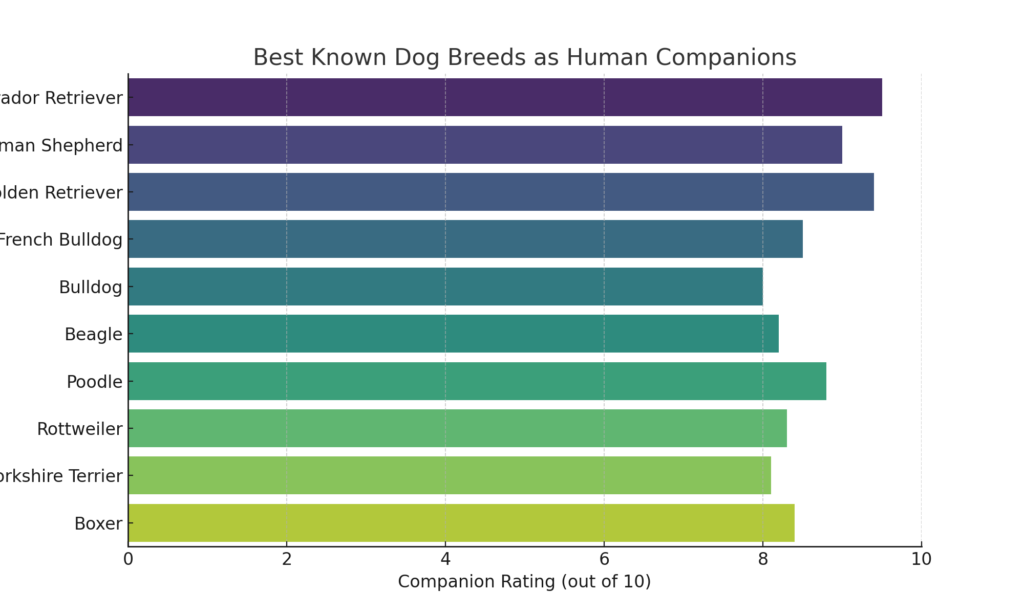
Here is a chart displaying some of the best-known dog breeds as human companions, rated on a scale of 1 to 10. The ratings are based on factors such as friendliness, trainability, and suitability for families and individuals. This visual representation offers a quick comparison of these popular breeds in terms of their overall suitability as companions.
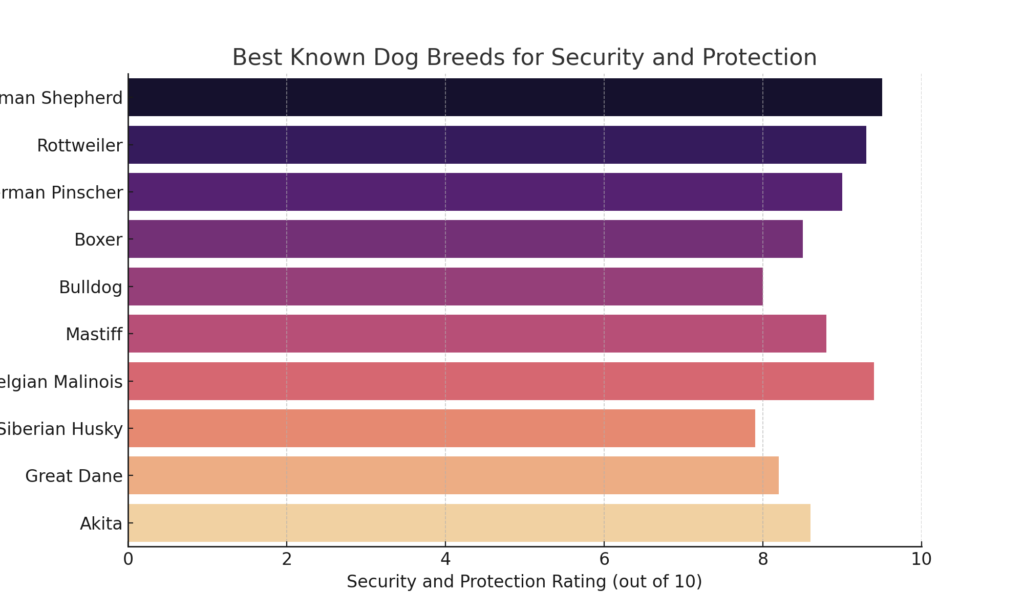
Here is a chart showcasing some of the best-known dog breeds renowned for their capabilities in security and protection. Each breed is rated on a scale of 1 to 10 based on their guarding abilities, loyalty, and natural protective instincts. This chart provides a clear comparison of these breeds, highlighting their effectiveness in roles related to security and protection.
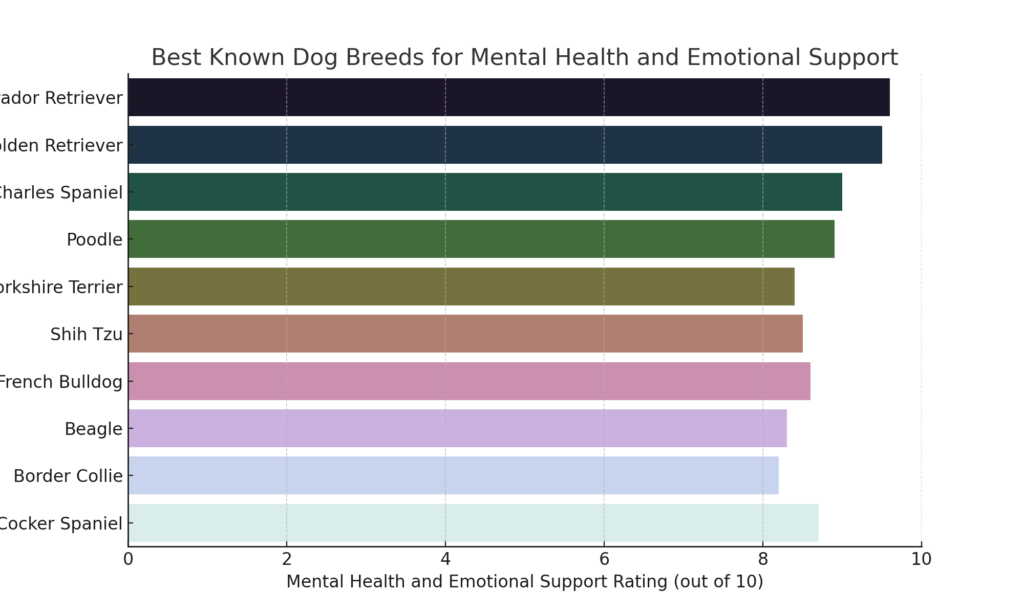
The chart illustrates some of the best-known dog breeds that are particularly beneficial for mental health and emotional support. Each breed is rated on a scale of 1 to 10, reflecting their capacity for providing emotional comfort, reducing stress and anxiety, and enhancing overall mental well-being. This visual guide aids in understanding which breeds are especially adept at offering emotional support and companionship.
Conclusion
Choosing the right pet is a personal decision that depends on a variety of factors including lifestyle, living arrangements, and personal preferences. While other pets offer their own unique benefits, dogs stand out for their versatility, emotional intelligence, and the deep bond they form with their owners. As you conduct your comparative research, consider these aspects of dog ownership to determine if a canine companion is the best fit for your life.
faq
1. Why Do Dogs Have Tails?
- Answer: Dogs have tails for multiple reasons, including balance, communication, and expressing emotions. Tails help them maintain stability while running and making turns, and they are also used to convey a wide range of emotions and social signals.
2. What Does a Dog’s Tail Wagging Mean?
- Answer: Tail wagging can mean several things depending on the context. It generally indicates excitement, happiness, or contentment, but it can also be a sign of nervousness, anxiety, or submission.
3. Can Dogs Control Their Tails?
- Answer: Dogs have some control over their tails, using them intentionally to communicate. However, certain tail movements can be instinctive reactions to emotions or environmental stimuli.
4. Why Do Some Dogs Have Curly Tails?
- Answer: Curly tails in dogs are a result of genetics. Certain breeds, like Pugs and Shiba Inus, are known for their curly tails, which are a breed-specific trait.
5. Do All Dogs Have Tails?
- Answer: Most dogs are born with tails, but the length and shape vary by breed. Some breeds have naturally short or bobbed tails, and in some cases, tails are docked for various reasons, though the practice is controversial and banned in many places.
6. What is Tail Docking?
- Answer: Tail docking is the practice of removing a portion of a dog’s tail, usually done when the dog is a few days old. It’s traditionally done for specific breeds for historical working reasons, aesthetic purposes, or health concerns, but it’s increasingly viewed as unnecessary and unethical.
7. Can a Dog Break Its Tail?
- Answer: Yes, dogs can break or injure their tails. Trauma, such as getting the tail caught or hit, can lead to fractures or nerve damage.
8. How Do Dogs Use Their Tails to Communicate?
- Answer: Dogs use their tails to communicate various emotions. A high, stiff tail can indicate alertness or aggression, while a low tail might show submission or fear. A relaxed, wagging tail typically signifies happiness.
9. What Are Common Tail Problems in Dogs?
- Answer: Common tail problems include injuries, fractures, infections, and skin issues. Dogs can also suffer from “limber tail syndrome,” which causes pain and limpness in the tail.
10. Can Dogs Feel Pain in Their Tails?
Answer: Yes, dogs can feel pain in their tails. The tail contains nerves and blood vessels, so injuries can be painful.
11. How Should I Care for My Dog’s Tail?
Answer: Regular grooming and inspection of the tail are important. Keep the area clean, check for fleas and ticks, and watch for any signs of injury or infection.
12. Are There Breeds Without Tails?
Answer: Some breeds, like the Australian Shepherd and the Brittany Spaniel, may be born with a naturally bobbed or very short tail.



